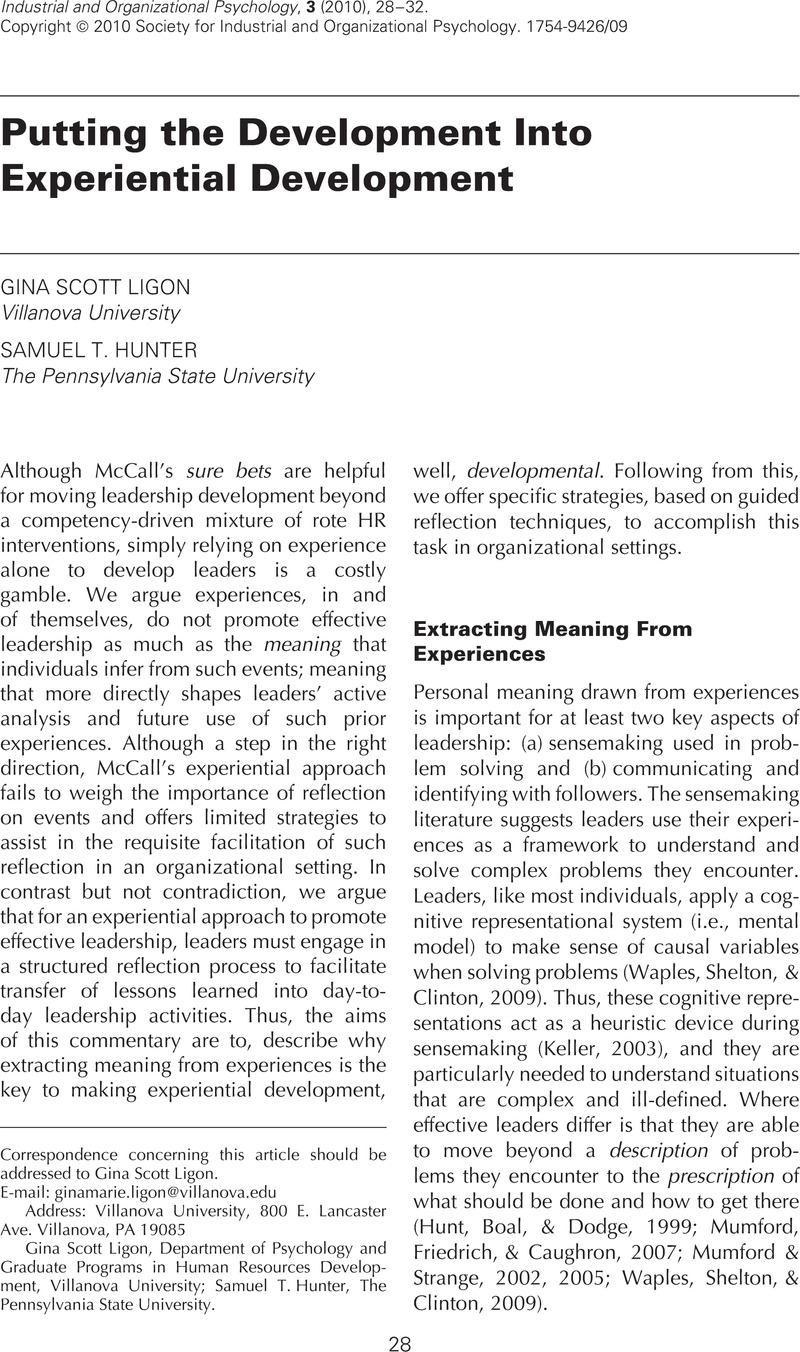Crossref Citations
This article has been cited by the following publications. This list is generated based on data provided by Crossref.
McCall, Morgan W.
2010.
Peeling the Onion: Getting Inside Experience-Based Leadership Development.
Industrial and Organizational Psychology,
Vol. 3,
Issue. 1,
p.
61.
Ligon, Ginamarie Scott
Wallace, James H.
and
Osburn, Holly K.
2011.
Experiential Development and Mentoring Processes for Leaders for Innovation.
Advances in Developing Human Resources,
Vol. 13,
Issue. 3,
p.
297.
Petriglieri, Gianpiero
Wood, Jack Denfeld
and
Petriglieri, Jennifer Louise
2011.
Up Close and Personal: Building Foundations for Leaders' Development Through the Personalization of Management Learning.
Academy of Management Learning & Education,
Vol. 10,
Issue. 3,
p.
430.
Ligon, Ginamarie S.
Graham, Katrina A.
Edwards, Aliyah
Osburn, Holly K.
and
Hunter, Samuel T.
2012.
Handbook of Organizational Creativity.
p.
633.
Ligon, Gina Scott
Harris, Daniel J.
and
Hunter, Samuel T.
2012.
Quantifying leader lives: What historiometric approaches can tell us.
The Leadership Quarterly,
Vol. 23,
Issue. 6,
p.
1104.
Jefferson, Jonathan K.
Martin, Ira H.
and
Owens, Jake
2014.
Leader Development Through Reading and Reflection.
Journal of Leadership Studies,
Vol. 8,
Issue. 2,
p.
67.
Maurer, Todd J.
Leheta, Dina M.
and
Conklin, Thomas A.
2017.
An Exploration of Differences in Content and Processes Underlying Reflection on Challenging Experiences at Work.
Human Resource Development Quarterly,
Vol. 28,
Issue. 3,
p.
337.
Boak, George
and
Crabbe, Sarah
2019.
Experiences that develop leadership capabilities.
Leadership & Organization Development Journal,
Vol. 40,
Issue. 1,
p.
97.
Bonesso, Sara
Cortellazzo, Laura
and
Gerli, Fabrizio
2024.
Developing leadership behaviours in higher education: A quasi-experimental study on the effect of experiential learning.
Innovations in Education and Teaching International,
Vol. 61,
Issue. 1,
p.
70.



